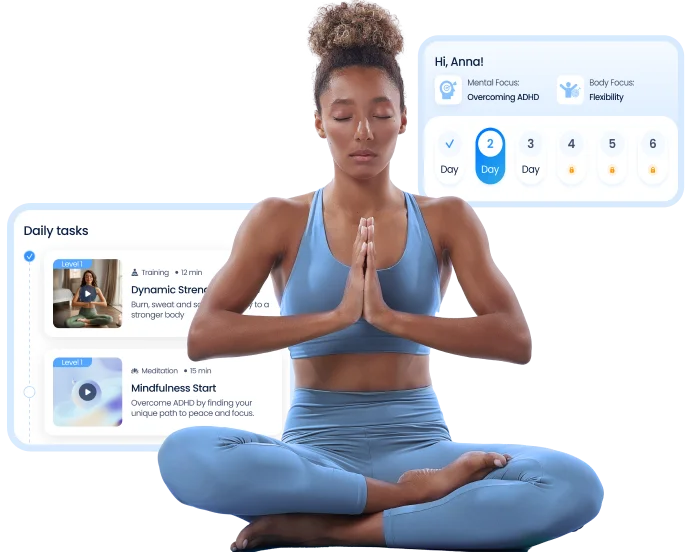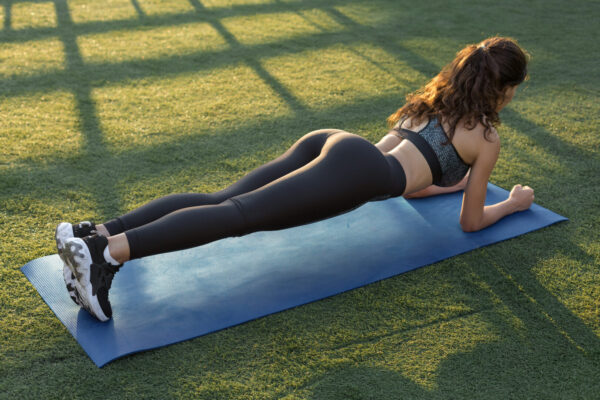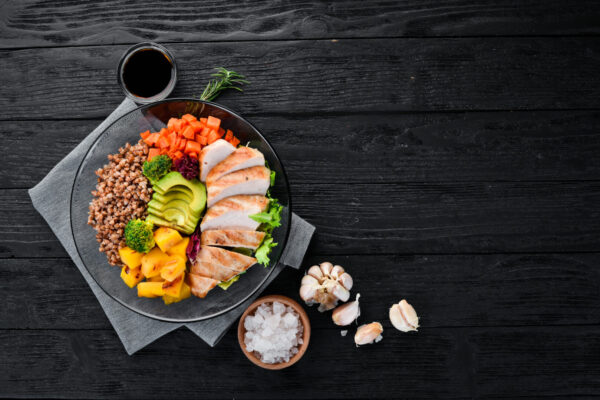Chicken and Broccoli Diet: A Complete Guide to Fast Weight Loss and Muscle Gains

Looking to shed those extra pounds while maintaining muscle mass? The chicken and broccoli diet has gained popularity among fitness enthusiasts and bodybuilders for its simplicity and effectiveness. This straightforward approach focuses on two nutritional powerhouses that’ll help you reach your health goals.
By combining lean protein from chicken with the nutrient-rich properties of broccoli, you’ll create a calorie-controlled meal plan that supports weight loss and muscle retention. While it’s not meant to be a long-term solution, this diet can jumpstart your fitness journey or help you break through a plateau. In this article, you’ll discover how these two simple ingredients can transform your body composition when paired with proper portion control and consistent exercise.
Key Takeaways
- The chicken and broccoli diet is a short-term eating plan focused on consuming multiple daily meals of skinless chicken breast and steamed broccoli to promote weight loss while preserving muscle mass.
- Each meal typically contains 6 ounces (0.23 kg) of chicken breast (42 g protein) and 2 cups of broccoli (12 g carbs), providing approximately 330 calories with essential nutrients and fiber.
- While effective for quick results, this diet can lead to nutritional deficiencies in calcium, iron, and essential fatty acids due to its restrictive nature and elimination of most food groups.
- The diet can be made more sustainable by incorporating alternative lean proteins (turkey, fish), adding variety in vegetables, and including strategic supplements to address nutrient gaps.
- Proper portion control, meal timing around workouts, and adequate hydration are crucial for maximizing the diet’s effectiveness and minimizing potential health risks.
What Is the Chicken and Broccoli Diet
The chicken and broccoli diet relies on eating multiple meals consisting primarily of skinless chicken breast and steamed broccoli throughout the day. This eating pattern restricts caloric intake by limiting food choices to these two main ingredients while providing essential proteins from chicken and vitamins from broccoli.
A typical daily meal plan includes 3-5 servings of:
- 6 ounces of grilled skinless chicken breast
- 2 cups of steamed broccoli florets
- 1 tablespoon of olive oil for cooking
| Nutrient Content Per Meal | Amount |
| Calories | 330 |
| Protein | 42 g |
| Carbohydrates | 12 g |
| Fiber | 5 g |
| Fat | 14 g |
This restrictive eating pattern eliminates most food groups including:
- Grains
- Dairy products
- Fruits
- Other vegetables
- Added sugars
- Processed foods
The diet’s structure focuses on creating a significant caloric deficit through food restriction while maintaining a high protein intake. Bodybuilders often use this approach during pre-competition phases to reduce body fat percentage quickly. The limited food choices make meal prep straightforward, eliminating decision fatigue around food choices.
Each meal combines the muscle-preserving properties of lean protein with the nutrient density of cruciferous vegetables. Chicken provides essential amino acids for muscle maintenance while broccoli delivers fiber, vitamins C, K, and B6 antioxidants.
Health Benefits of Eating Chicken and Broccoli
The combination of chicken and broccoli creates a nutrient-dense meal that supports overall health and fitness goals. Here’s how these two ingredients contribute to your well-being:
High-Quality Protein Content
Chicken breast delivers 31 g of complete protein per 100 g serving. This lean protein source contains all nine essential amino acids needed for muscle repair, growth, and maintenance. The protein in chicken:
- Increases muscle protein synthesis by 50% when consumed post-workout.
- Promotes satiety by reducing ghrelin levels up to 25% more than carbohydrates.
- Supports metabolic function with a thermic effect of 20-30% of consumed calories.
- Maintains lean muscle mass during caloric deficits through amino acid preservation.
Essential Nutrients and Fiber
Broccoli packs vital nutrients and fiber that complement chicken’s protein profile:
| Nutrient | Amount per Cup | % Daily Value |
| Vitamin C | 85 mg | 95% |
| Vitamin K | 116 mcg | 100% |
| Folate | 57 mcg | 14% |
| Fiber | 2.4g | 10% |
| Potassium | 288 mg | 6% |
The benefits of such a combination include:
- Enhance immune function through antioxidant compounds like sulforaphane.
- Support bone health with vitamin K and calcium absorption.
- Regulate blood sugar levels with 2.4 g of fiber per cup of broccoli.
- Improve digestion through prebiotic fiber content.
- Boost metabolism with B vitamins from both ingredients.
How to Follow the Chicken and Broccoli Diet and Lose Weight
Following the chicken and broccoli diet involves precise meal planning with measured portions of grilled chicken breast and steamed broccoli. Here’s a detailed breakdown of how to follow this diet effectively.
Meal Planning Basics
- Prepare 3-5 meals daily, spacing them 3-4 hours apart.
- Cook multiple potions at once to save time.
- Store meals in airtight containers for up to 3 days.
- Season chicken with salt, pepper, and garlic powder.
- Steam broccoli until tender-crisp.
- Include 1 tablespoon of olive oil per day for cooking.
- Drink 8-10 cups of water daily.
- Time meals around workouts for optimal energy.
Portion Control Guidelines
Each meal consists of specific quantities to maintain consistent caloric intake:
| Component | Amount per Meal | Daily Total |
| Chicken Breast | 6 oz (170 g) | 18-30 oz |
| Broccoli | 2 cups (180 g) | 6-10 cups |
| Olive Oil | 1 tsp (5 ml) | 1 tbsp |
| Water | 16-20 oz | 8-10 cups |
Potential Risks and Limitations
The chicken and broccoli diet presents several health concerns due to its restrictive nature. Following this diet pattern creates specific nutritional gaps while posing challenges for long-term adherence.
Nutritional Deficiencies
The limited food selection in a chicken and broccoli diet creates notable nutrient gaps:
- Calcium deficiency from the absence of dairy products impacts bone health.
- Iron absorption decreases without vitamin C-rich food variety.
- Essential fatty acids remain low due to minimal healthy fat sources.
- Carbohydrate restriction affects energy levels during workouts.
- B-vitamin intake drops without whole grains, legumes, and nuts.
- Zinc magnesium levels fall below daily requirements.
| Nutrient | Daily Requirement | Amount in Diet | Deficit |
| Calcium | 1000 mg | 130 mg | 870 mg |
| Carbohydrates | 225-325 g | 30 g | 195-295 g |
| Healthy Fats | 44-77 g | 15 g | 29-62 g |
Sustainability Concerns
You need to be sure that you’re ready for the potential downsides and challenges that can challenge your consistency:
- Food monotony leads to flavor fatigue after 5-7 days.
- Social dining becomes complicated with limited food choices.
- Meal preparation requires constant cooking of fresh ingredients.
- Travel restrictions arise from specific food requirements.
- Exercise performance declines from inadequate carbohydrate intake.
- Mood changes occur from restricted food varieties.
- Metabolic adaptation develops from prolonged caloric restriction.
- Limited food flexibility.
- Increased cravings for restricted foods.
- Disrupted eating patterns.
- Social isolation during meals.
- Heightened food preoccupation.
Tips for Making the Diet More Balanced
Tip 1. Add nutrient-rich vegetables alongside broccoli. Include spinach, kale, bell peppers, or asparagus to expand your micronutrient intake while maintaining low calories.
Tip 2. Incorporate healthy fats through controlled portions of avocado, nuts, or seeds. Add 1/4 avocado or 1 tablespoon of almonds per meal to support hormone function and vitamin absorption.
Tip 3. Rotate protein sources to prevent nutrient gaps. Replace chicken with fish like salmon or cod 2-3 times weekly to increase the consumption of omega-3 fatty acids and essential amino acids.
Tip 4. Include complex carbohydrates in moderate amounts. Add 1/2 cup of quinoa, brown rice, or sweet potato to 1-2 meals daily for sustained energy and fiber.
Tip 5. Supplement strategically based on deficiencies:
- Calcium: 1000 mg daily through supplements or fortified beverages.
- Vitamin D: 1000-2000 IU daily, especially with limited sun exposure.
- B-complex: Contains all essential B vitamins for energy metabolism.
- Magnesium: 300-400 mg daily for muscle nerve function.
- Iron: 18 mg daily for women and 8 mg for men.
Tip 6. Time your meals around workouts:
- Pre-workout: Eat 2-3 hours before exercise.
- Post-workout: Consume protein and carbs within 30 minutes.
- Non-training days: Space meals 3-4 hours apart.
Tip 7. Track your macronutrient ratios:
| Nutrient | Daily Target |
| Protein | 30-35% |
| Carbs | 40-45% |
| Fats | 20-25% |
Alternative Meal Options and Variations
The chicken and broccoli diet becomes more sustainable with strategic food substitutions that maintain its core nutritional principles. Here’s a breakdown of protein alternatives and vegetable options that preserve the diet’s effectiveness while adding variety.
Protein Alternatives
- Swap chicken breast with lean turkey breast (4 oz provides 30 g protein)
- Replace chicken with white fish like cod or tilapia (6 oz serves 31g protein)
- Use egg whites (1 cup equals 26 g protein)
- Incorporate lean beef sirloin (4 oz delivers 33 g protein)
- Add white-fleshed fish like halibut (5 oz contains 32 g protein)
Vegetable Options
- Mix broccoli with cauliflower (1 cup = 25 calories)
- Add asparagus spears (1 cup = 27 calories)
- Include green beans (1 cup = 31 calories)
- Incorporate Brussels sprouts (1 cup = 38 calories)
- Try zucchini noodles (1 cup = 19 calories)
Seasoning Variations
- Add garlic powder + black pepper
- Mix dried herbs (basil oregano thyme)
- Use lemon juice + fresh herbs
- Include low-sodium soy sauce
- Sprinkle cayenne + paprika
Cooking Methods
- Air fry chicken (375°F for 12 minutes)
- Grill vegetables (400°F for 8 minutes)
- Poach protein in broth (15 minutes)
- Steam both components (10-12 minutes)
- Bake in parchment paper (375°F for 20 minutes)
| Meal Component | Calories | Protein (g) | Cooking Time (min) |
| Turkey Breast | 130 | 30 | 15 |
| White Fish | 145 | 31 | 12 |
| Egg Whites | 125 | 26 | 5 |
| Lean Beef | 150 | 33 | 10 |
| Cauliflower | 25 | 2 | 8 |
| Asparagus | 27 | 3 | 7 |
These variations create 15 unique meal combinations while maintaining the diet’s core principles of high protein and low-calorie nutrition.
Is the Chicken and Broccoli Diet Effective?
Such a diet may be a good short-term solution to lose weight rapidly and preserve muscles. It’s straightforward, so it eliminates decision fatigue. However, it’s not meant to be a permanent lifestyle choice, as it’s too radical and can deprive you of the variety of macronutrients and vitamins your body needs to function healthily.
You’ll see the best results by using this diet strategically – perhaps as a kickstart to your fitness journey or a temporary reset. Remember to listen to your body and make mindful adjustments by including healthy alternatives and supplements when needed.
If you decide to try this approach, make sure to eat healthy: reduce the amount of junk food and prioritize proper portion sizes, healthy cooking methods, and adequate hydration. With careful planning and the right modifications, you can harness the benefits of this diet while maintaining a balanced approach to your nutrition goals.
FAQ
What is the chicken and broccoli diet plan?
The chicken and broccoli diet is a restrictive meal plan that primarily consists of skinless chicken breast and steamed broccoli. It’s popular among bodybuilders and fitness enthusiasts for weight loss while preserving muscle mass. The diet typically includes 3-5 daily meals, each containing 6 ounces of chicken and 2 cups of broccoli.
How much protein does chicken breast provide?
Chicken breast provides 31 grams of complete protein per 100g serving. This high-quality protein source helps with muscle repair, growth, and maintenance while promoting satiety and supporting metabolic function during caloric deficits.
What are the main nutritional benefits of broccoli?
Broccoli is rich in essential nutrients, including vitamin C, vitamin K, folate, and potassium. It provides fiber for improved digestion, supports immune function, promotes bone health, helps regulate blood sugar levels, and boosts metabolism.
How long can you follow the chicken and broccoli diet?
This diet is not recommended for long-term use due to its restrictive nature. It’s best used as a short-term strategy for specific goals like competition prep or breaking through weight loss plateaus. Extended use can lead to nutritional deficiencies and psychological fatigue.
What are the potential risks of this diet?
The main risks include nutritional deficiencies in calcium, iron, essential fatty acids, carbohydrates, and B vitamins. The diet’s restrictive nature can lead to mood changes, increased cravings, and disrupted eating patterns. It may also cause social dining difficulties and meal preparation challenges.
Can I modify the diet to make it more sustainable?
Yes, you can add variety by including different vegetables, rotating protein sources, and incorporating healthy fats in controlled portions. Consider making a broccoli stir-fry by adding vegetables and using both chicken and alternative proteins like turkey, fish, or lean beef while maintaining the diet’s core principles.
How should I prepare and store the meals?
Prepare multiple portions at once and store them in airtight containers for up to 3 days. Season chicken before cooking, steam broccoli until tender-crisp, and use 1 tablespoon of olive oil daily for cooking. Use a digital kitchen scale and measuring cups for accurate portions.
Do I need supplements while on this diet?
Due to its restrictive nature, supplementation may be necessary for proper weight management. Consider supplements for calcium, vitamin D, B vitamins, magnesium, and iron. Consult with a healthcare provider to determine specific supplementation needs based on your individual requirements.






